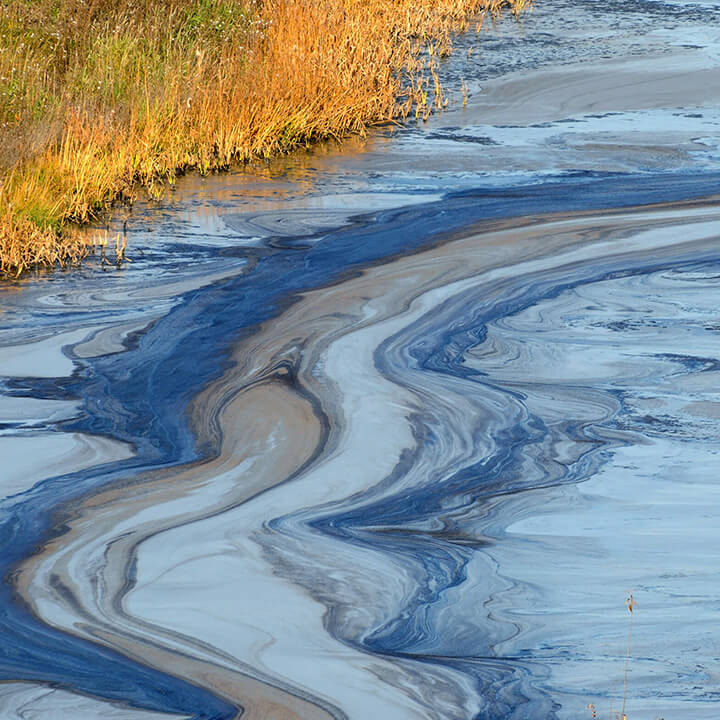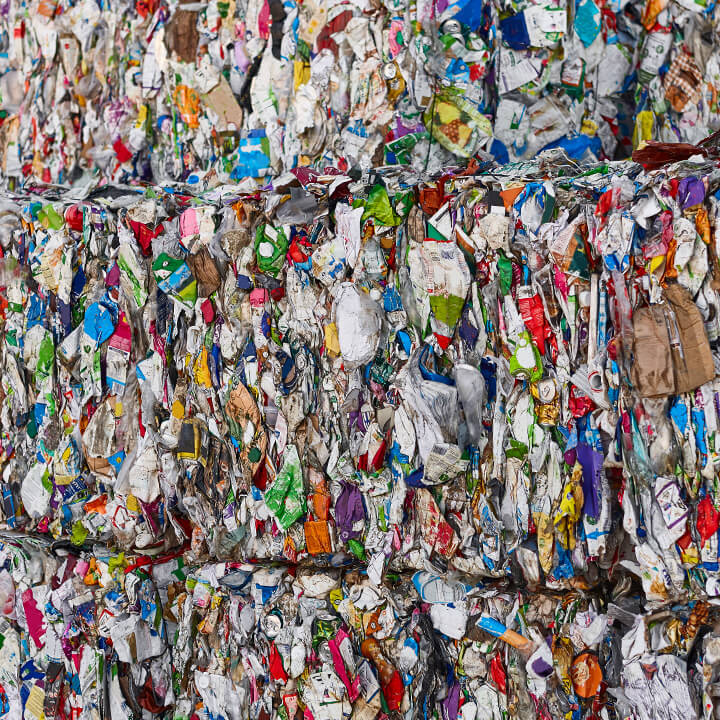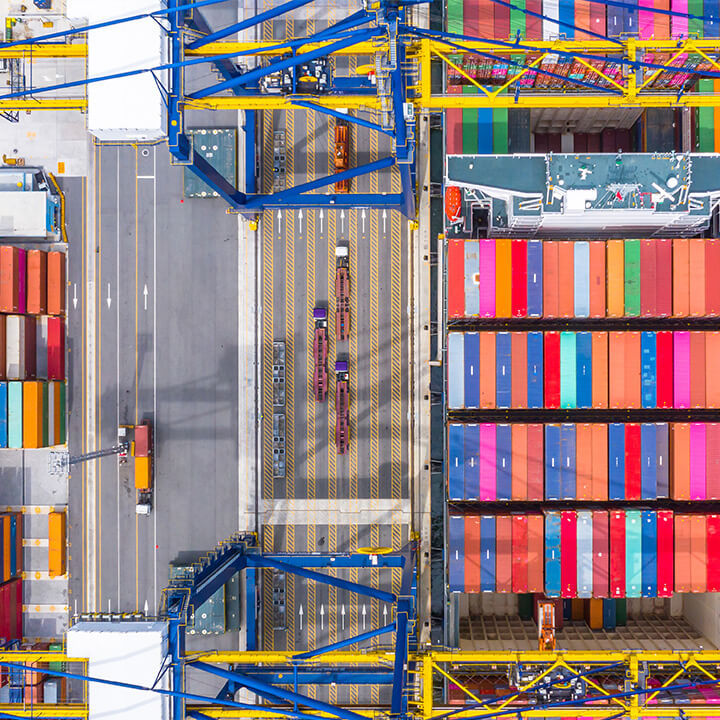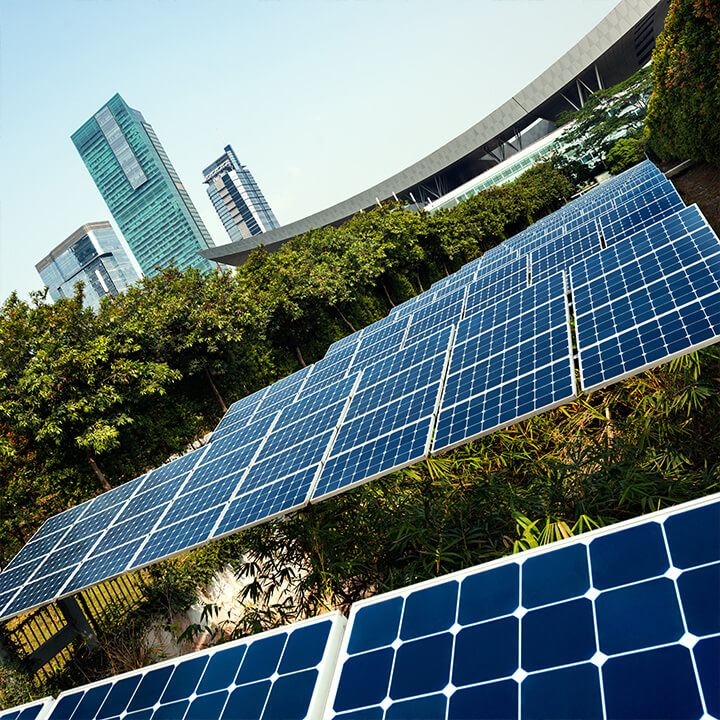Water pollution and construction: Causes, remedies and repercussions
25th September 2023
“The state of Britain’s waterways has hit the headlines in recent weeks, but water pollution isn’t just an issue for the water companies – it can arise on construction sites too. In this article, we explain key water pollution issues for those operating in the built environment.”
– Rachel Turnbull, Director, Regulatory & Compliance

Water pollution and construction: What are the main causes?
Water pollution incidents often arise on construction sites if proper planning and procedures are not put in place. There are typically three sources of pollution from construction sites which can impact on watercourses: silt pollution; the release of hydrocarbons or chemicals; and the release of other site waste into the water such as litter or building materials.
Silt. Silt pollution is the most common source of pollution on construction sites. It often occurs when greenfield sites are stripped back for cut and fill operations in preparation for construction activities. The impact of this activity can be underestimated by developers, but there are often clues ahead of development, that surface water management may be an issue. Signs include: the topography of the site, as steep slopes are likely to result in faster runoff; proximity to watercourses, as the closer the site is to a watercourse, the greater the risk that any run off from the site will end up in the watercourse; any existing measures (such as land drains, for example), which might indicate that surface water already needs some kind of management; and local resident information (often locals will be aware of surface water flooding or run-off issues in the past, and may even have referred to such issues during the planning process).
Removing topsoil and vegetation renders silt immediately vulnerable to surface water runoff. Use of heavy machinery which compacts the ground can exacerbate the problem, increasing the amount of water and silt which runs over land and enters surface water drainage channels and nearby watercourses. Use of plant and machinery also agitates topsoil and increases mobilisation of silt particles. Whilst measures such as wheel washing aim to prevent mud being transported onto the road, if not managed correctly they can inadvertently facilitate silty water leaving the site.
If soil particles remain suspended in the surface water and are carried off site, they can have significant impacts on the quality of local watercourses. Silt in the watercourse is often seen as relatively innocuous, perhaps because it’s naturally occurring. However, silt can have detrimental effects on rivers and streams – smothering aquatic plants and invertebrates, blocking fish gills and overwhelming gravel beds, meaning that they cannot be used by spawning fish.
Fuel/chemicals. Another source of pollution from construction sites is fuel and chemical spillages. Use of plant and machinery can mean that there’s often a requirement to store fuel on site. Failure to site fuel tanks at appropriate points away from vehicle routes (to minimise the risk of collisions) and access points (to minimise the risk of vandalism) can result in accidental spillages. Other chemicals present, such as those used in the cement making process and solvents, can also harm the environment if accidentally released.
Spillages of fuel and chemicals can have an extremely harmful impact on watercourses and can very quickly cause serious pollution. Diesel spillages spread very rapidly, killing fish as well as plant life and invertebrates in streams and rivers. Fuel and chemicals can also affect the potability of water and, in some cases, spillages can result in the regulator having to close abstraction points along a watercourse. That then impacts the operations of farmers, businesses and local residents. The costs and time associated with remediating a watercourse that has been impacted by fuel or chemicals can be significant.
Site waste and litter is another common pollution issue arising from poorly managed sites. Development sites are often exposed to the elements, meaning loose waste can blow around, and potentially off, a site. Where a site is near to a watercourse, waste can be blown or washed into streams and rivers. This source of pollution can be more easily managed than others and is often more easily remedied. If such pollution occurs, it may necessitate some clear up works along the watercourse. Whilst this may be time consuming, it doesn’t often result in the more complex and damaging impacts of other sources of pollution.
What do landowners/developers/contractors need to do?
Forward planning and the operation of water management procedures can reduce the risk of a significant pollution event.
In respect of silt pollution, surface water management needs to be considered at the very outset of a project. Often this forms part of the planning process, but it’s important to make sure that any planning conditions are adhered to, and to actually implement any measures identified as necessary.
It’s also important to remember that the risk of surface water pollution will vary depending on the phase of the project and also the time of year. Undertaking topsoil clearance and cut and fill activities during the wetter winter months should be avoided wherever possible. You may therefore need to adapt your silt pollution measures to the conditions as the development progresses.
You may need take advice on the best silt pollution prevention measures for your site. It’s usually preferable, in terms of minimising cost, timing and operational impacts, for this to be done proactively, rather than after issues have arisen – prevention is better than cure! There are many methods available, ranging from straw bales, silt fences and floc mats, all the way up to construction of lagoons and the use of flocculants and filtration equipment. Some of these can have significant financial implications, so should be factored into the overall cost of a development.
To mitigate risks associated with fuel/chemical pollution, site staff should be trained in using spill kits and the action to take in the event of a significant spillage. Site managers or others should receive specialist environmental training. Fuel and chemical storage tanks should be positioned in suitable locations. They should be stored far from any watercourse or surface water drains, and from access points and traffic routes. In areas where the risk of vandalism is high, additional security surrounding fuel stores is advisable. Storage tanks should also be bunded so that, in the event of a spillage during loading or any damage to the tank, the full capacity of the tank can be contained. Oil storage legislation stipulates certain storage requirements and failure to comply is a criminal offence.
Properly positioned waste stores, training of site staff on the importance of maintaining a tidy site, and ensuring that everyone does their bit to comply with all applicable site rules and legislation can help prevent litter becoming a problem on site. In areas of particular sensitivity, or where there’s a problem with litter escaping, you may wish to erect litter fencing. Site staff should also undertake regular inspections to ensure that any problem areas are dealt with pre-emptively, and loose waste is prevented from leaving the site boundary.
Why do I need to consider water pollution?
If one of your sites is the source of surface water pollution you could be approached by a number of different regulators. In England and Wales, the principal regulators are the Environment Agency and Natural Resources Wales respectively. However, depending on the circumstances you may also be investigated by a local authority or statutory undertaker.
Under UK legislation, a polluting discharge to surface waters or groundwater requires an environmental permit. It’s an offence to cause or knowingly permit a polluting discharge without such a permit. Failure to adequately manage surface water can also be a breach of planning conditions and, in certain situations, a pollution incident can breach other legislation in relation to protected species or habitats. Regulators have significant powers to prosecute for breaches, can impose civil sanctions including financial penalties, and can also require work to stop on site, causing significant problems for the timetabling of a project [1].
As well as statutory and regulatory breaches, and depending on the particular circumstances and commercial arrangements, a pollution incident could also give rise to contractual and/or tortious civil liability.
Pollution incidents can also have significant financial and reputational consequences. Local residents are often quick to identify and report issues to regulators and through social media/other forums. That can cause significant negative publicity for a site owner, developer or contractor.
Recent enforcement action
Recent headlines have seen water companies, and even some regulators, facing allegations of environmental breaches in relation to water pollution. But private sector businesses are also in scope when it comes to the crackdown on water pollution and enforcement action. For example, in recent months, a number of UK housebuilders have been issued with fines ranging from £100,000 to £500,000 for silt pollution and illegal discharges.
As well as criminal convictions, regulators are increasingly turning to civil sanctions to penalise companies for breaching legislation. However, whilst agreeing an Enforcement Undertaking with a regulator may spare a business the negative publicity associated with a conviction, these undertakings are for increasingly large sums of money. This trend is likely to continue if the UK Government implements plans to increase the current limit on the civil penalties that can be imposed.
Water pollution and construction: Need some support?
Walker Morris’ dedicated Environment team comprises multi-discipline specialist lawyers experienced in environmental issues and all other aspects of water pollution and the environmental permitting regime. We can work with businesses at every stage of a project to create, implement and deliver an effective strategy to avoid and remediate any water pollution issues. With former regulators on the team, we pride ourselves on providing upfront, strategic advice and transactional assistance, to minimise the risk of water pollution or other environmental issues impacting development projects. Where allegations of environmental breaches do arise, we can support clients with sensitive and effective crisis management advice, as well as by negotiating with regulators to avoid or minimise penalties, convictions and commercial/reputational consequences.
Please contact Rachel, Mike, or any member of the Environment team for tailored advice, assistance or training on any matter associated with water pollution and construction or environmental issues generally.
[1] Many environmental offences fall under the Sentencing Guidelines which set out guidance on the size of penalties that a court should impose in the event of a conviction. These penalties are calculated based on the turnover of a business but also the level of culpability of the business and the harm caused to the environment. Since the introduction of the guidelines, fines in the courts have risen significantly with seven figure penalties for water pollution incidents becoming much more common.












